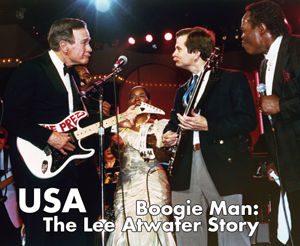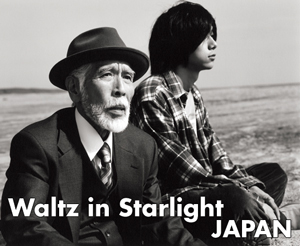CIFF: Boogie Man: The Lee Atwater Story, Waltz in Starlight
By Rob Christopher in Arts & Entertainment on Oct 23, 2008 3:30PM
 This is part of Chicagoist's coverage of the Chicago International Film Festival.
This is part of Chicagoist's coverage of the Chicago International Film Festival.
Boogie Man: The Lee Atwater Story (screens 10/23 and 10/25)
It's hard to think of a more timely political film for this moment in history than Stefan Forbes' new documentary. In it, Karl Rove describes the GOP operative as "part myth, part showman, part political mastermind." And Rove ought to know; he was Atwater's protégé. Atwater was indeed a master of the slickly-packaged smear campaign, a pioneer in the use of push-polls, and adept at media manipulation. He started his career by signing up his fellow college students to support Nixon in 1972. From there he became an aide to Strom Thurmond. By 1980 he was working on Reagan's campaign team during the primaries, where his skills helped Reagan win the crucial North Carolina contest. But it was his creation of the infamous "Revolving Door" and Willie Horton ads in the 1988 presidential campaign that remain his greatest acheivements, turning a 17-point lead by Dukakis into a decisive victory for Bush. It propelled Atwater to the very top of the RNC. But a brain tumor precipitated his decline, and he died in 1991. Forbes' film is riveting. It openly admires Atwaters's tenacity even as it comdemns the cold-bloodedness of his tactics. And it's jam-packed with juicy soundbites and interviews (from Atwater insisting to an interviewer, "My political style is loveable," to James Baker's description of him as "Machiavellian, in the positive sense"). Ed Rollins gets in some of the best lines. It's said that Atwater died a repentant man, finding faith in God in his last months. But as Rollins tells it, when they were collecting his personal effects after his death, they found his Bible still wrapped in cellophane.
 Waltz in Starlight (screens 10/24 and 10/25)
Waltz in Starlight (screens 10/24 and 10/25)
Japanese mumblecore? Not exactly. But Waltz in Starlight does have some similarities to movies in that genre: young adult characters adrift in a pre-fab environment; a gently wandering storyline that ebbs and flows; and a low fi, semi-documentary aesthetic that blurs the lines between performer and subject. Nobu works as a photographer's assistant in Tokyo, and the film opens as he returns to his hometown to visit his family. He's a quiet kid who favors baggy jeans and rock band t-shirts, and he's fond of snapping photos as a way of engaging with the world around him. We follow him as he hangs out with two of his childhood pals, going to the mall to play at the video arcade and smashing up an abondoned car at the edge of a field. These short documentary segments are intetresting enough but they seem to belong to a different movie. The heart of the story, and where things really come to life, is watching Nobu interact with his grandfather, a wise but mischevous old man who makes sketches with colored pencils when he's not perusing Playboy or drinking beer. Something about that role reversal, the quiet kid and the vivacious senior citizen, is really tender to see. And when a tragedy occurs, the way each reacts in his own way is quite moving.